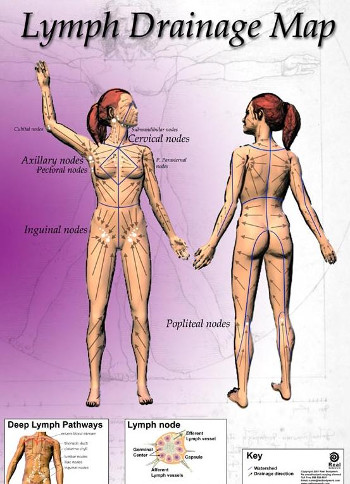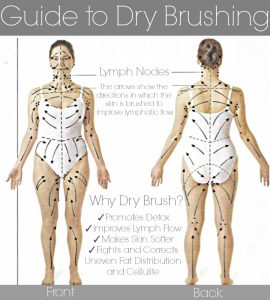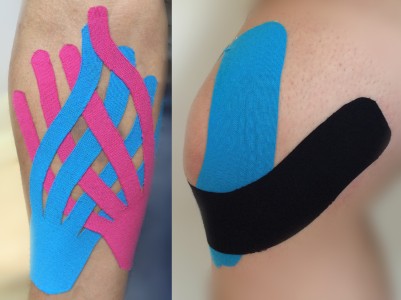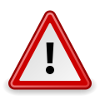CDT: Manual Lymph Drainage
Manual Lymph Drainage, or MLD, is a gentle specific type of skin stretching massage treatment that essentially manually helps your lymphatics do what they can no longer do on their own. In my What is Lymphedema page I discuss how our lymphatics work and how when you move around your muscles act like a pump, helping to push lymph fluid through your lymph vessels, your lymph nodes and into your two main drainage ducts to remove lymph waste from your system. When parts of the lymphatics are impaired or are too overwhelmed to pump that fluid we can use MLD to assist in that process.
If you have never done MLD on your own before, I highly recommend you receive approval, direction and training from a Certified Lymphedema Therapist (CLT) and perhaps even your doctor! If you have any other underlying medical condition, such as congestive heart failure or other serious condition(s), moving large volumes of fluid around the body, especially into your trunk area, might have negative consequences.
CDT: Manual Lymph Drainage
I am not a CLT but have been performing my own MLD for several years now under the direction and training from at least two CLTs. I have Lymphedema from the waist down to my ankles and in both my upper arms, so I need to perform self MLD in several areas. Before I use my compression pump, usually in the morning, I perform self MLD lying down on my bed to help open up lymph pathways and facilitate movement through my various lymph node centers. This helps me get good lymph flow going before donning my compression garments for the day.
MLD Techniques
There are four different techniques CLTs can use for MLD. They may focus on one technique or learn two or more if they have patients with different types of edema that need MLD treatment. Each requires specialized training and certification before they can start treating patients. The four techniques are:
- Vodder Technique
Developed in France in 1932 by Emil and Estrid Vodder and used widely in Australia, Europe and the United States it is the most common form of MLD used by CLTs and taught to their patients. The skin is stretched and torqued in a specific manner, based on scientific, physiological principles to enhance lymphatic flow. It has a powerful relaxing and calming effect on the nervous system. With its gentle rhythmic and pumping motion, the hands follow the direction of lymph flow with noticeable results.Hand movement can be upward strokes or circular motions depending on the area being massaged. With the hand usually in a “V” shape, equal pressure from the thumb and remaining fingers are applied to the skin with increased pressure to start and moves into a lighter pressure at the end of each stroke. You are essentially stretching and releasing the skin from the distal, or furthest, point towards the proximal point, or center of the body. If done correctly there is no pain, redness or bruising of the skin. (1) Read more about the Vodder Institute and their training for CLTs. - Foldi (Foeldi) Technique
Still looking for a good explanation on this technique, but you can see a video on the technique being performed on someone. Would love to hear from anyone trained in this technique or someone who performs this themselves as part of their treatment regimen. - Casley-Smith Technique
Still looking for a good explanation or video on this technique. Would love to hear from anyone trained in this technique or someone who performs this themselves as part of their treatment regimen. - LeDuc Technique
Still looking for a good explanation or video on this technique. Would love to hear from anyone trained in this technique or someone who performs this themselves as part of their treatment regimen.
MLD Self Care
The distinct advantage of having a CLT perform MLD on you is they can apply the correct pressure at the correct angles as they face your body. However, most of the time it will be just you performing MLD on yourself. Your CLT can teach you how to properly perform self MLD so that you can reap the benefits of increased lymphatic flow, especially if you have congested areas around one of your major lymph node clusters.

Self MLD is usually performed lying down but you can do it sitting or standing to work the affected areas. I find it easier to be lying down in my bed to work the main lymphotome areas, or main lymph drainage areas. You usually start with the cervical area and work your way towards the outer limb areas. This is to ensure your pathways are open to receiving increased lymph flow from the next worked on area or node cluster.
Self MLD is a light touch massage that gently stretches the skin and then relaxes the stretch to stimulate the lymph vessels under the skin. Be sure you do not squeeze or slide your hand across the skin. It needs to be a stretching movement. It simulates what your body should naturally be doing and intensifies the effect to help move the excess fluid out of the area where it can be directed to the two main lymph ducts for processing. You must perform it correctly to reap the best benefits.
Your goal is to move the fluid out of the interstitial areas, the area between your cells, into your lymph vessels, through the main node clusters and into the two ducts for final processing. While this seems straightforward you may feel that the fluid is not moving as well as it should. Sometimes fluid backs up in one of your lymph node clusters, like a long line at the TSA (Transportation Security Administration) checkpoint at the airport.
Your lymph nodes are like the TSA checkpoints at the airport, needing to inspect everything flowing through it for foreign material that needs to be isolated and removed. The rest of the “normal” lymph fluid passes through the checkpoint until it reaches the next checkpoint where it is inspected again and again until it reaches it final destination. When lymph fluid backs up you may feel bloating or swelling in that area. This is a sure sign you need to perform self MLD to help your system keep that fluid moving.
You have several node clusters distributed throughout the body that need monitoring for signs of lymph backup or an infection, much like the doctor feels the lymph nodes in your neck when you have a sore throat. They are checking for an accumulation of bacteria building up in your nodes from the spread of the infection from other parts of your system via your lymphatics. The main lymph node centers in your body are located:
- Cervical (around your collar bone)(other nodes up your neck and around your jaw)
- Axillary (armpit area)
- Elbow
- Groin (inguinal area)
- Popliteal (back of the knee)
Now that we have looked at the need to stimulate our lymphatic flow and the main lymph node cluster areas of the body, we now need to look at how to perform the actual skin massage technique. Instead of me trying to explain the movements, here is a great video that can illustrate self MLD:
https://youtu.be/wzcpww0ECHo?si=1pSTHabArpUro3mX
Once you start performing self MLD you will gain a better sense of how well your lymph fluid is moving, or not moving, in your body. I can now tell when lymph fluid is stagnated in one or more of my affected areas. The area feels bloated, painful (more than usual), perhaps even a little fibrotic with more pressure on my nerves and muscles.
I can also tell when one of my main lymph node areas is congested, meaning fluid is backing up in one of the main processing areas. The area is swollen with pressure around the node cluster. This is a good indication I need to perform self MLD on that node cluster as well as the clusters upstream to maintain good lymph flow. You will know if you were successful as the pain and swelling will greatly reduce and you will urinate more frequently!
The Big 6 Lymph Reset
Dr. Perry Nickelston, of Stop Chasing Pain, has developed a six-point self massage drainage program that facilitates systems lymph drainage. There are six key areas to address. You gently massage each area in a circular motion for 10 rotations followed by 10 taps.
- Cervical (above and below your collar bone)
- Under your ear behind your jaw line
- Axillary (armpit area)
- Abdomen
- Groin (inguinal area)
- Popliteal (back of the knee)
Here is his video demonstrating the technique.
Note that you can use your hands to perform the massage or a small handheld vibrating ball to enhance the massage.
If you are pregnant or have any other underlying medical condition, such as congestive heart failure or other serious condition(s), moving large volumes of fluid around the body, especially into your trunk area, might have negative consequences. Please consult your physician before proceeding.

Personal Note: After many years of not performing lymphatic massage on my trunk I tried 3/6 of the Big 6 steps and became sick with flu-like systems for a couple days. Apparently, my trunk was VERY congested and I could feel fluid moving out of my trunk into the thoracic duct. My advice is to start low and slow until you know you can fully tolerate the 6 steps without side effects. It has been VERY effective for me since my body adjusted!
Deep Breathing
Another technique that should be employed before and after MLD is diaphragmatic breathing. This is deep breathing from your belly instead of from your chest. It is best to do this deep breathing lying down for 5-10 minutes a couple times per day, but you can also do this sitting up too. You should breathe in through your nose and exhale through the mouth to properly move the air.
Your diaphragm is a large dome-shaped muscle located at the base of your lungs. When you breathe in through your nose your abdominal muscles will expand and your diaphragm tightens and moves downward, allowing you to inhale more deeply. This will allow your lungs to expand more fully getting more oxygen into your body. When you exhale slowly through your mouth your abdominal muscles fall, your diaphragm relaxes and moves upward, allowing you to force more carbon dioxide out of your lungs. This rising and falling action acts like a large pump, pulling lymph fluid up from the groin node area into your abdomen and chest area for processing.
You may need to practice diaphragmatic breathing for a while before it becomes secondary nature. When we were born we took deep breaths via belly breathing, but over the years many of us transitioned to chest breathing. It could be the stresses of today’s world or the tight clothing we wear, but it is most beneficial to return to diaphragmatic breathing, especially for those of us with lower extremity Lymphedema.
Besides its relaxing effect, this type of breathing also slows the heartbeat and can lower or stabilize blood pressure.
Dry Brushing
Our skin is the largest elimination organ of our body meaning we purge toxins and waste through our pores throughout the day, up to a quarter of our waste daily. When we dry brush our skin we help open up clogged pores, exfoliate dead skin cells, reduce cellulite and stimulate the lymphatics just under the skin to help move lymph fluid, which is vital for those of us with Lymphedema. Using a dry natural hair brush instead of s synthetic one provides better results and is gentler on the skin.
Note: If you have serious acne, eczema or psoriasis problems, you may want to skip with activity to prevent further damage to those affected areas.

It is recommended to dry brush in the morning before taking a bath or shower. You should start at your feet, using long, even and upward strokes always brushing upwards towards the heart. This is important as it stimulates circulation in the correct direction. In larger areas of the thighs you can you circular motions where fat deposits tend to cluster. You want to be sure to follow the correct brushing path to effectively move lymph and blood in the correct direction.
Here is a dry brushing chart from Smart Living showing the lymphatic flow for you to follow (2). Along with a great brushing diagram you can find detailed instructions on how to methodically move up your body and in which direction you should brush for optimal effects.
Remember not to brush too hard, especially if you have broken or blotchy skin. Shower or bathe afterwards to wash off remaining dead skin and waste. Apply a moisturizer, preferably one that is natural like coconut oil and free of chemicals, to lock in hydration and keep skin soft and supple. Don’t forget to clean your brush and hang to dry so you’ll be ready for your next brushing.
The key to good results is the repeated dry brushing of your skin. Over time, somewhere between 30 and 90 days, you should notice changes in your skin tone and texture. You should also have improved blood and lymph fluid movement too.
Kinesiology Tape Help For Lymphatic Drainage

Kinesiology is the study of the mechanics and anatomy of human movement and their roles in promoting health and reducing disease.(3) This science examines physical activity across a range of tasks including exercise, daily living, play, sports, and work for people with and without disabilities. Let’s look how specialists have used this knowledge to develop a special tape, aptly named kinesiology tape, to help those with Lymphedema.
The purpose of kinesiology tape, when applied to an area of edema, is to gently lift the skin creating a space between the top layer of skin and the underlying tissues. This space creates a pressure gradient between this area and the surrounding tissues that allows fluids to move into the lymphatic vessels and be eliminated from the body. In addition, enhanced muscle activation increases the muscle pump pushing more fluid through the lymphatic vessels. The result? Swelling goes down, pain is relieved, and the healing process is accelerated. (4)
There are different types and widths of kinesiology tape available. The one most recommended for those with Lymphedema are known as fan or spider tape as the strip has a common endpoint with strips that fan out in different directions. You can also save yourself some money, buy the wider roll and cut your own fan strips, too. The fan endpoint is applied to the furthest end of the affected extremity and fanned out over the lymphatic channels where it can lift the skin and aid in lymphatic drainage. Most of the success seen has been in those recovering from breast cancer using the fan strips on one or both arms to either prevent or reduce Lymphedema swelling.
There have been very few studies on the use of kinesiology tape with those suffering from serious Lymphedema and Lipo-Lymphedema. While there might be some promise to its use in assisting in MLD there are enough reviews stating it could cause more problems than it solves, such as ripping or tearing of the skin, rashes or reactions and bruising. There are little to no studies or evidence to support using kinesiology tape over standard compression modalities.

It is highly recommended that you consult with your Certified Lymphedema Therapist or medical professional before attempting to use this technology in your CDT regimen! The last thing you want to do is to make your situation worse!

Personal note: I used kinesiology tape in treating tendinitis in my right arm. It did help channel the excess swelling out of my arm, but it was painful for me to pull off. I also reacted to the adhesive. I would not personally use it on my areas of Lymphedema for risk of skin tears and reacting to the adhesive. My physical therapist also did not recommend its use either.
CDT: Manual Lymph Drainage Summary
There are several ways to achieve manual lymph drainage that can be performed by yourself. The best way to move lymph fluid out of stagnated areas and in fibrotic tissue areas is using a manual massage method in the key lymph node cluster areas. The Big 6 program, using either your hands or a vibration massage ball, is one good way to achieve this lymph flow. It takes just a few minutes to do and the effects can be quite profound in opening up lymphatic pathways.
There are other methods of stimulating lymphatic fluid flow. This includes using a dry brush technique, best done before using a pneumatic pump or donning compression garments. Kinesiology tape could be another technique to help stimulate lymph fluid by gently lifting the skin as you move your body part(s).
Check with your Physical Therapist or medical professional before beginning a regular lymphatic flow regimen to make sure 1) are you performing the massage correctly, 2) there are no side effects, and 3) there are no contraindications in starting a program.
It would be great to hear what you have found to work best for MLD or if you have found something not listed that really helped you with lymph drainage! Please drop me a line below and let me know what you found useful in your CDT: Manual Lymph Drainage regimen.
To Your Improved Health!
References:
- (1) Vodder Institute – Manual Lymph Drainage (MLD)
- (2) Smart Living Network – Dry Skin Brushing Guide: Fight Cellulite and Promote Detox!
- (3) Encyclopedia Britannica – Kinesiology definition
- (4) Theratape.com – How Kinesiology Tape Helps with Lymphatic Drainage
Resources:
- Cleveland Clinic – Diaphragmatic Breathing
- Harvard Health Publishing – Learning diaphragmatic breathing
- US National Library of Medicine National Institutes of Health – Kinesiology Taping reduces lymphedema of the upper extremity in women after breast cancer treatment: a pilot study
- Klose Training Lymphedema Certification – Elastic Taping for Lymphedema
- How to Perform Self Manual Lymph Drainage (MLD) #FDRS2016
- Dr. Vodder’s Manual Lymph Drainage- Kathy Fleming
- Vodder Institute – Sample Vodder MLD Techniques
- Foeldi Training Institute
Books and Media: